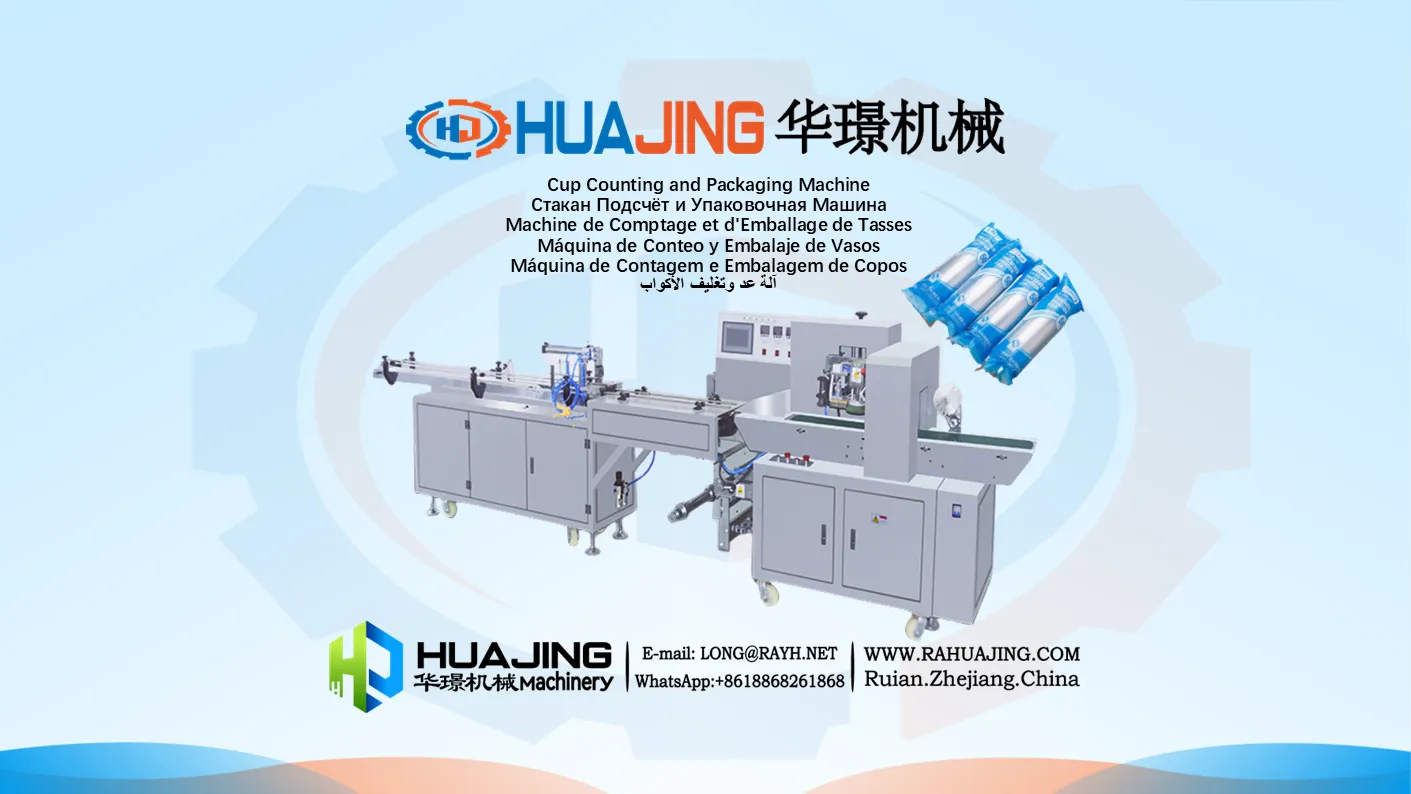
This is a highly efficient automated packaging equipment specifically designed to wrap multiple plastic cups (typically pre-arranged groups) into a three-dimensional pillow-shaped package and seal both ends.
Core Concept: What is "Pillow Packaging"?
"Pillow packaging" gets its name from the final product's resemblance to a small pillow. Its characteristics include:
• Three-side sealing: One longitudinal back seal and two transverse end seals.
• Strong encapsulation: The film tightly wraps around the product, forming a three-dimensional bag.
• High visibility: Transparent film is usually used, making the product clearly visible.
Core Working Principle of Plastic Cup Pillow Packaging Machines
The process can be summarized as "film wraps product, three sides sealed and cut."
Arrangement and feeding: Formed and printed plastic cups are fed into the machine via a conveyor belt.
Film feeding and forming: A single film fold is pulled from the reel, guided over rollers. A key component—the former—folds the flat film into a "□" or "∪" shape, wrapping it around the cup group.
Longitudinal heat sealing: The film-wrapped cup group moves forward through a longitudinal heat sealing mechanism, which heats and seals the overlapping edges (usually the back) of the film, forming a continuous longitudinal seal.
Transverse sealing and cutting: This is the most critical step. A reciprocating cross-sealing head performs two actions simultaneously between two packages:
o Heat sealing: Seals the tail of the front package and the head of the rear package transversely.
o Cutting: Cuts between the two transverse seal lines, separating the packages.Output: The finished, separate pillow packages are conveyed out of the machine.
Main Components of the Equipment
A standard pillow packaging machine typically includes:
Machine frame & drive system: A sturdy frame and precision drive mechanism ensure smooth operation.
Hopper & conveyor belt: Used to guide and arrange the plastic cup groups.
Film rack: Holds the film reel, usually with tension control devices to ensure smooth, flat film feeding.
Former: The core mold that determines how the film wraps the product. Different formers are needed for different product sizes.
Longitudinal sealing mechanism: A pair of heated wheels or bars for continuously sealing the film's longitudinal seam.
Transverse sealing & cutting mechanism: Typically a pair of rollers with heating plates and a cutting blade that synchronously perform transverse sealing and cutting. Their precision directly determines seal quality and appearance.
Control system: PLC and Touch Screen HMI (Human-Machine Interface) for setting parameters like package length, temperature, speed, and monitoring machine status.
(Optional) Heat tunnel: Connected to the main machine's outlet for shrinking the film.
Production Process Flow
Arranged plastic cup groups → Fed into the packaging machine → Film pulled from the reel → Wraps around the cup group via the former → Longitudinal heat sealing → Transverse heat sealing and cutting → Individual pillow packages formed → Finished product output.
Key Technologies and Advantages
High speed & efficiency: Pillow packaging is a continuous process with very high speed, reaching dozens of packs per minute, making it ideal for mass production.
Excellent sealing: The three-side seal provides good protection against dust, moisture, and contamination, extending product shelf life.
High adaptability: By changing the former and adjusting parameters, one machine can package cup products of different sizes.
Material savings: Compared to pre-made bag packaging, pillow packaging uses roll film, resulting in less material waste and lower costs.
Attractive presentation: Transparent film makes the product clearly visible, while the film itself can be printed with delicate patterns and text to enhance brand image.
Application Scenarios
Pillow packaging machines are widely used in the plastic cup industry. Typical examples include:
• Disposable cups
• Yogurt cups
• Ice cream cups
• Jelly cups
• Disposable beverage cups (e.g., individual packaging for bubble tea takeaway cups)
Summary
The plastic cup pillow packaging machine is a highly efficient, automated, and cost-effective backend packaging solution. It perfectly combines product protection with merchandise display and is an indispensable piece of equipment for mass production in the FMCG industry. Its core value lies in rapidly transforming high-speed produced plastic cups into ready-for-sale (sale-ready) merchandise units.


